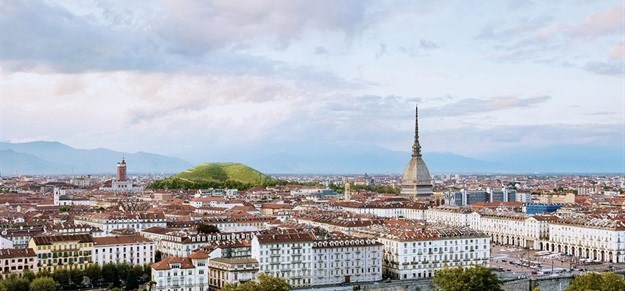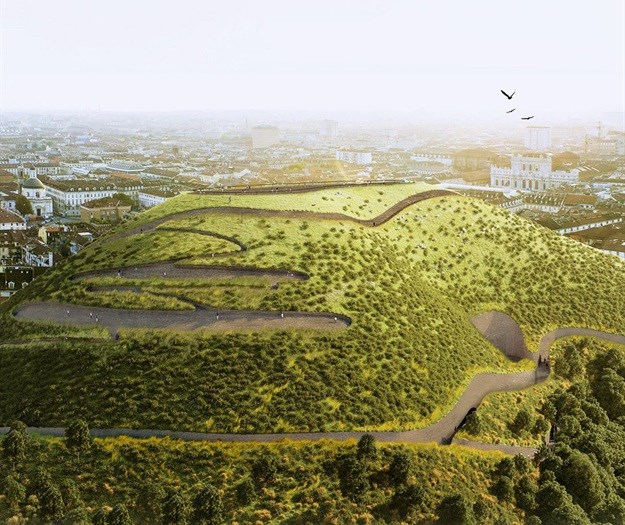Angelo Renna creates artificial sponge mountain to absorb CO2 in Turin

Installed as "a new green landmark" in the centre of the city, the sponge mountain will absorb the carbon dioxide released by traffic, movement and industry by mixing with engineered soil - a mixture of sand and concrete. The intended result is that no polluted air will be released into the air.
Renna's proposal aims to contribute to climate change mitigation by preventing pollution entering the atmosphere. Apart from its function, the artificial mountain includes walkways, paths and green vegetation for people to enjoy, overlooking the city.
Renna states that the artificial mountain has the capacity to absorb CO2 with an inorganic form at a rate of 85 tonnes per hectare, per year over five years. When Renna compared it to a hectare of rainforest which absorbs five tonnes per hectare per year, she says that the project could create a significant impact in the city.

Renna developed this special concept for SUCCESS, an organisation that seeks to determine the ability of soils to act as a carbon sink, by engineering them to absorb carbon and to convert them into a benign state.
Article originally published on World Architecture Community.
Source: World Architecture Community

Since 2006, World Architecture Community provides a unique environment for architects, architecture students and academics around the globe to meet, share and compete.
Go to: https://worldarchitecture.org/






